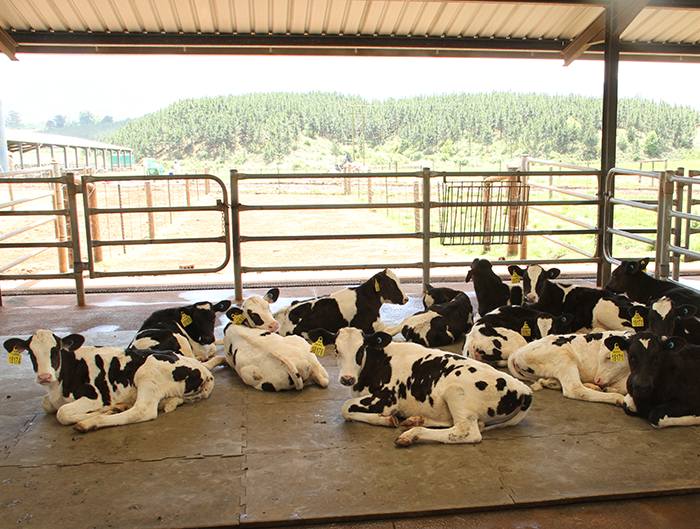Optimal nutrition alone doesn’t guarantee success in Calf raising. It has to be combined with a thorough understanding of environmental microbiology and disease control. Biosecurity is the foundation for all disease prevention programs and is one of the most important points in antibiotic reduction. It includes the combination of all measures taken to reduce the risk of introduction and spread of diseases. It is based on the prevention of and protection against infectious agents by understating the disease transmission processes. A comprehensive program of testing, proper cleaning, sanitation and monitoring can reduce the economic and emotional toll of calf diseases. The goal should be to identify specific problems, and then provide targeted solutions, develop standard sanitation operating procedures (SSOP) and oversee ongoing monitoring.

Biosecurity Program

Know your Operation: Conduct an audit on your facility. The “new eyes principle” should be applied to help you identify gaps in your biosecurity plan, as well as processes that may be allowing pathogens to enter or move from one location to another. Weaken your enemy, so it doesn’t spread.

Know your Protocol: Implement processes and procedures that apply the biosecurity principles that help to eliminate, prevent, or minimize the potential of disease. An audit of the daily farm processes will aid in risk mitigation - movement of personnel, equipment, visitors, entrance of pets, vermin and pests, dealing with deliveries and handling of mortality and used manure. Repetition: When the danger is frequent, the probability of injury is increased.

Know your Enemy: Identify and prioritize the disease agents of greatest concern on your facility, by applying the principles of focus and repetition. The risks related to disease introduction and spread are much more important on large facilities and can be easily disguised.
Biofilm

Don’t use a high-pressure washer to clean calf pens because of cross contamination. High pressure washers are good to remove soils, but they are not very good at removing the biofilm layer.

Biofilm is the enemy of calf raisers. Bacteria lives in communities called biofilms. These communities harbor many pathogens - up to 95% of the organic load.

Bacteria associated with respiratory disease, scours, Rotavirus and Crypto will hide in biofilms. It is important to control the spread of these bacteria because they can be financially devastating.

Biofilms are composed of carbohydrates, proteins and fat. Utilize soap that will emulsify the fats, while breaking down or solubilizing the carbohydrates and proteins.

Your goal is not to eliminate pathogens from your facility. You want to reduce the pathogen load so that when animals are exposed they won’t get the disease.


ATP Audits

A comprehensive program of testing, proper cleaning, sanitation and monitoring can reduce the economic and emotional toll of calf diseases.

Veterinarians that are involved in sanitation work with dairy clients should invest in an Adenosine Triphosphate Meter (ATP).

This device provides quick and easy measurements to identify “hot spots” of bacterial contamination.

Identifying and measuring contamination is just a starting point. The Audit brings real value to the facility by using the information to identify and solve the problems. It is important to work with the dairy team to develop SSOPs and a system for monitoring progress.
Chlorine Dioxide

Water is needed in almost any aspect of cleaning and disinfection.

Ensuring calves have access to high quality drinking water is critical to their health.

The key to water quality is the prevention of microbiological contamination.

Chlorine Dioxide provides a quick kill at low concentration and time values on coccidian oocysts, cryptosporidium oocysts, giardia cysts, bacterial spores, yeast and mold spores, Salmonella, E. coli, rotavirus and coronavirus.

Chlorine Dioxide eliminates planktonic and sessile bacteria, and migrates into and destroys biofilm habitat.

Dr. Don Sockett says that “Chlorine Dioxide is the most effective disinfectant for C. parvum, providing the quickest action at the lowest concentration among available disinfectants.”



